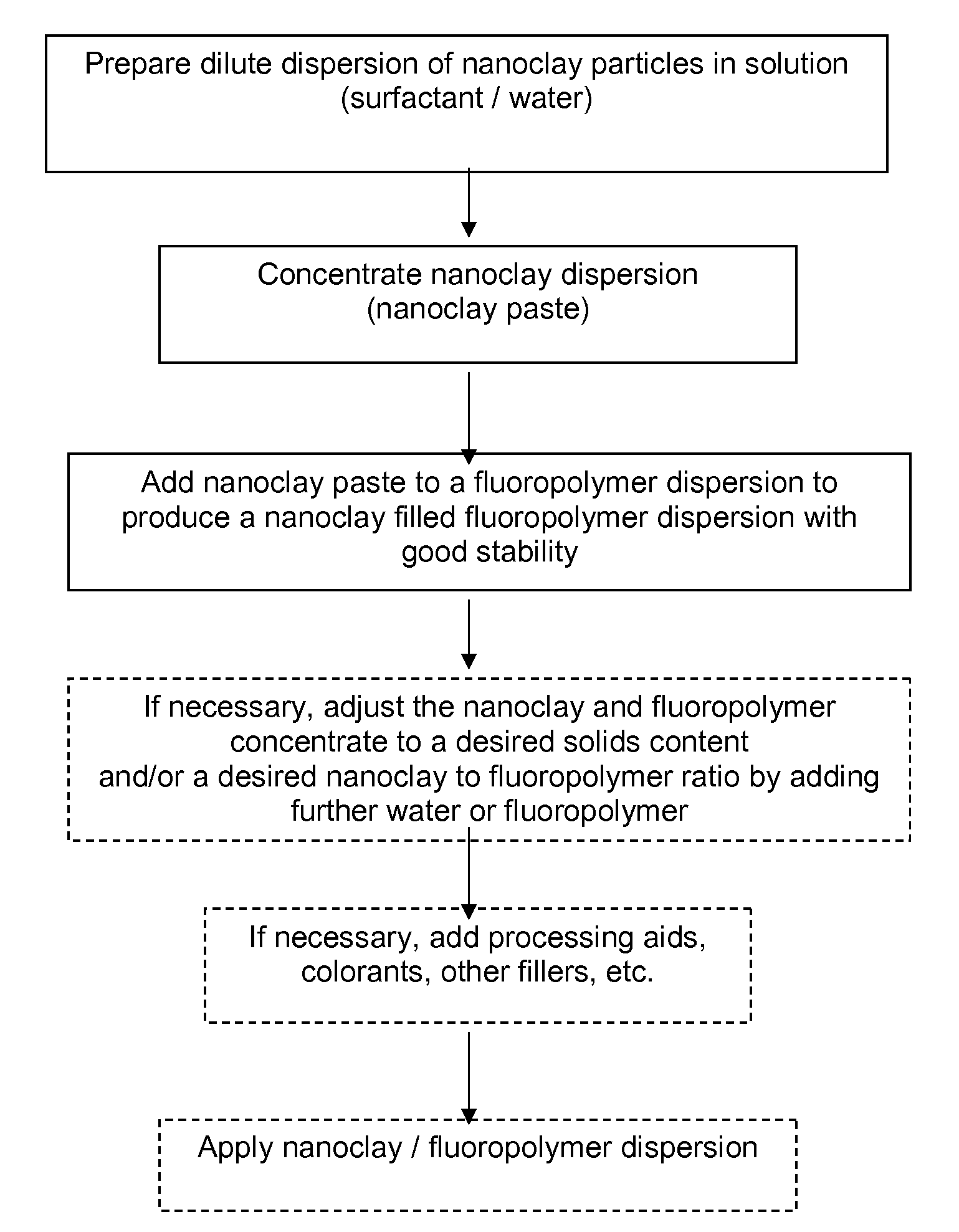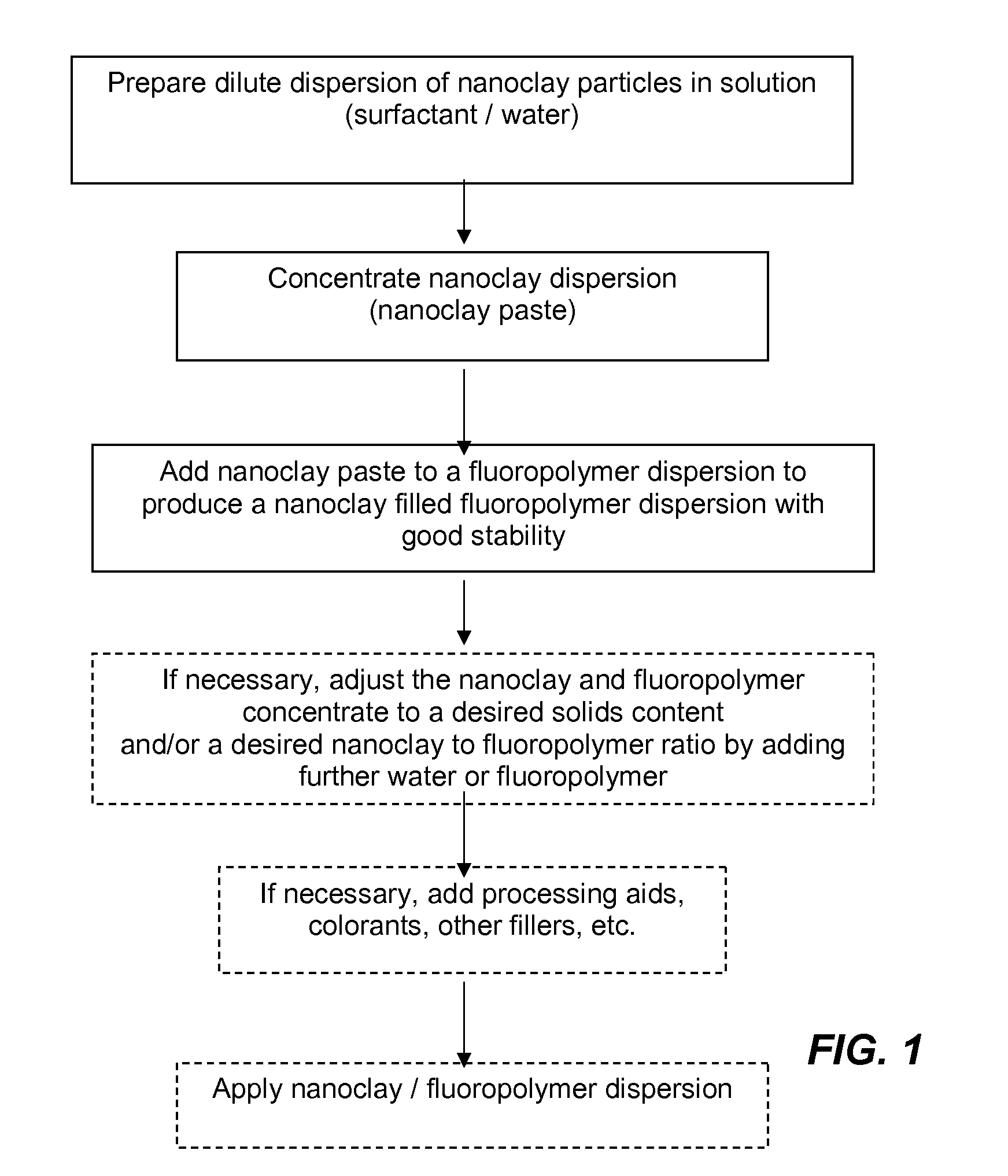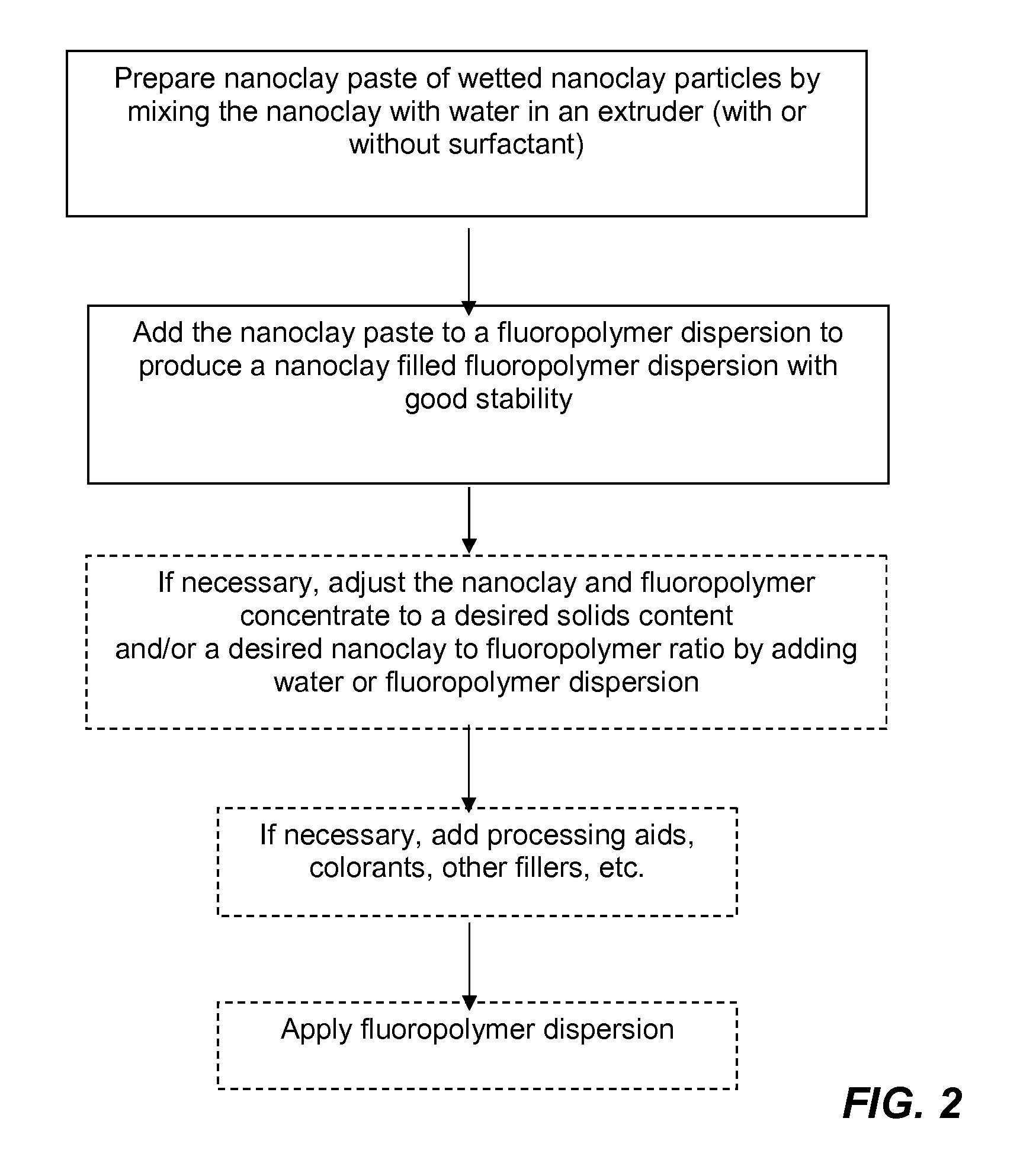Nanoclay filled fluoropolymer dispersions and method of forming same
- Summary
- Abstract
- Description
- Claims
- Application Information
AI Technical Summary
Benefits of technology
Problems solved by technology
Method used
Image
Examples
example 1
Preparation of Nanoclay Paste by Concentration
[0065]A nanoclay dispersion was prepared at about 5% solids by slowly adding 21 g of nanoclay (HNT™ from NaturalNano, Inc.) to 400 g of 1% Triton X-100 / de-ionized water solution while mixing at 5,200 RPM on a Silverson L4RT-A high shear mixer, and mixing for ½ hr. This was found to produce a uniform, dilute nanoclay dispersion that was stable to flocculation by breaking down of nanoclay aggregates into primary clay particles (using high shear mixing) and preventing nanoclay primary particles from re-agglomerating (by coating the nanoclay primary particles with nonionic surfactant to achieve steric stabilization). This dispersion was stable to flocculation, but not stable to sedimentation. Once stirring was stopped, within 24 hrs much of the nanoclay settled towards the bottom, leaving a supernatant that was noticeably lower in solids content than the sediment layer. To speed up this process, a centrifuge was used. The 5% nanoclay dispers...
example 2
Preparation of Halloysite / PTFE Concentrate
[0067]To make the halloysite / PTFE concentrate, 606 g of halloysite paste (57% solids) was added to 400 g of PTFE (DUPONT Teflon™) dispersion (60% solids) and blended together for 3 hrs. using a dual squirrel cage mixer at 250 RPM. This type of mixer is typically used to mix highly pigmented paints, which resembles the consistency of the nanoclay / fluoropolymer concentrate. This mixing did a good job of redispersing the nanoclay particles in the available water for the PTFE dispersion. The resulting halloysite / fluoropolymer concentrate had about 58% solids, with about 59% of the solids being halloysite. The halloysite / fluoropolymer concentrate appeared to have a very uniform consistency (like a well-mixed paint). The viscosity was measured using a Brookfield viscometer (see Table below), and exhibited shear thinning behavior. The nanoclay / fluoropolymer concentrate also appeared very stable to sedimentation.
Viscosity15cPs @ 2.5 s-18.7cPs @ 5 s-...
example 3
Working Concentration Nanoclay / Fluoropolymer Dispersion
[0069]A working concentration dispersion was prepared by mixing 60 gm of a halloysite / PTFE concentrate which contains 60% solids; 30% halloysite and 30% PTFE with 40 gm of a 50% PTFE dispersion. Magnetic stirring produced a uniform, smooth, readily flowing dispersion which did not settle out or separate for at least several days. The total % solids of this dispersion was 56%.
PUM
| Property | Measurement | Unit |
|---|---|---|
| Fraction | aaaaa | aaaaa |
| Fraction | aaaaa | aaaaa |
| Thickness | aaaaa | aaaaa |
Abstract
Description
Claims
Application Information
 Login to View More
Login to View More - Generate Ideas
- Intellectual Property
- Life Sciences
- Materials
- Tech Scout
- Unparalleled Data Quality
- Higher Quality Content
- 60% Fewer Hallucinations
Browse by: Latest US Patents, China's latest patents, Technical Efficacy Thesaurus, Application Domain, Technology Topic, Popular Technical Reports.
© 2025 PatSnap. All rights reserved.Legal|Privacy policy|Modern Slavery Act Transparency Statement|Sitemap|About US| Contact US: help@patsnap.com



